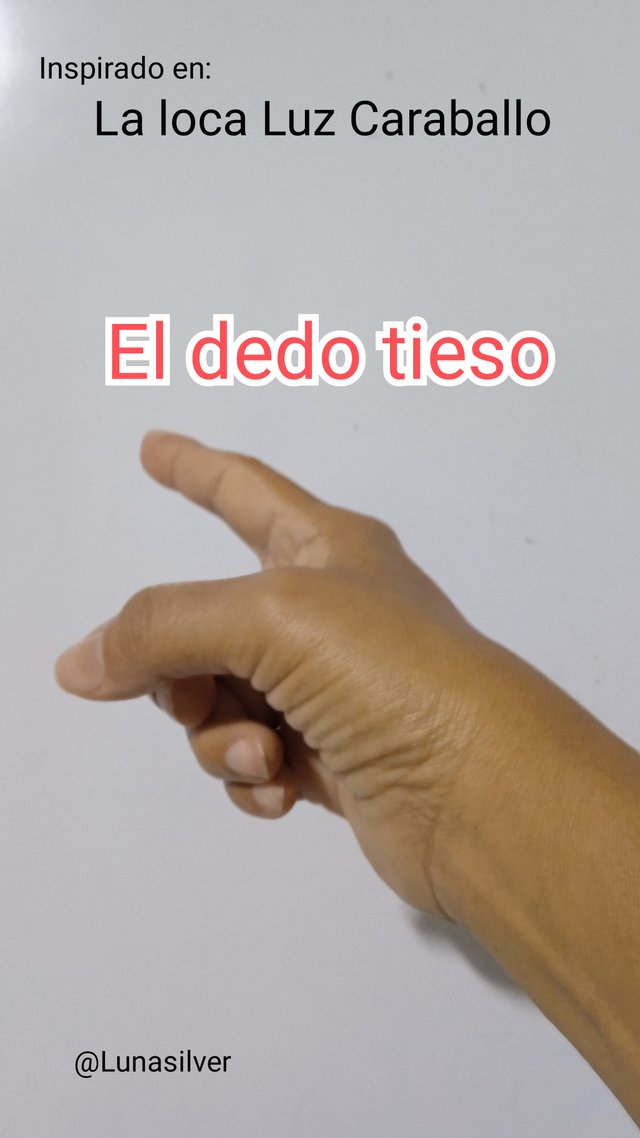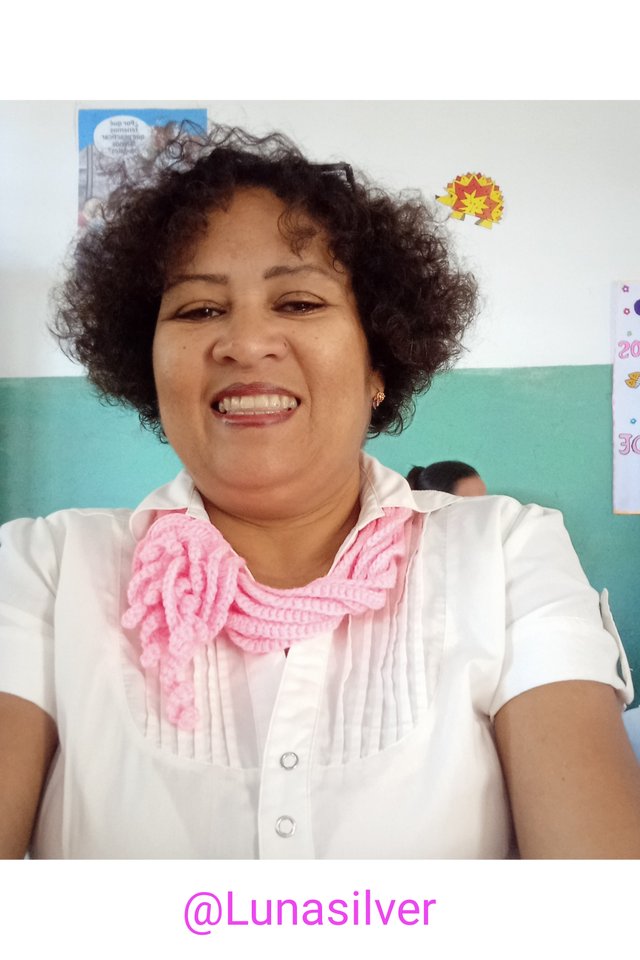Mi personaje en la sinopsis |my character in the synopsis
El microrrelato que realicé en la clase uno fue sobre " La loca Luz Carballo"

Sinopsis
Biografía:
En mi investigación sobre el personaje aprendí que fue una mujer de nombre María Blasa. En Trujillo, cuidad andina de Venezuela, en un poblado llamado Jajó.
Caraballo, es el nombre que recibian la personas de puel morena. Por eso mi mucro relato le coloqué cómo La Negra Blasa.
Era una mujer de agudos pensamientos. Pensaba diferente al resto de las mujeres de allí venía lo de "loca".
El poeta Andrés Eloy Blanco la inmortaliza con el poema "La loca Luz Carballo" donde describe lo que pasó con su familia. No se sabe si el marido la abandonó, para irse con otra o se fue junto con sus hijos a servir en el ejército de Simón Bolívar.
El poeta la describe como una mujer perdida en sus recuerdos, contando los ovejos que patoreaba. Otras versiones cuentan que la mujer escapa de la realidad al ser violada por los soldados españoles.
Con todo y eso, logra engañar a lis soldados para que no puedan encontrar al ejército de Bolívar por su paso por los andes, muentras se gestaba la libertad de Venezuela.
Perfil psicológico:
La información y la historia la describen como una mujer loca. Situación causada por su forma de oensar y veg las cosas o por su reacción a la situación que vivió con la perdida de sus seres queridos y su dignidad.
Apariencia:
Mujer hermosa morena de raza o por tostarse bajo el sol. Porque pastoreaba ovejas. Trabajadora. Madre de cuatro hijos y una hija.
Luego de su penoso momento, se le describe descuidada, vagabunda, perdida y desgarbada.
Ahora su estampa se conserva en forma de estatua. Señalando el camino, según dicen, cuando engañó el ejército español.
Su búsqueda/motivación:
Ella busca encontrar a sus seres queridos. También quiere, y así lo hizo, distraer al ejército español. Para que este, no encontrara el ejército de Bolívar, con quien sus hijos se habían ido.
Caracteres asociados:
Su familia.
Simón Bolívar.
Los ejercicios de ambos bandos.
Su rebaño de ovejas.
Hasta el juez del pueblo.
Hablemos del género literario
Personalmente creo que uno de los géneros que practico y me gusta mucho, son los cuentos.
Por aquí una pequeña muestra de mi afición:
Cuento 1:
https://steemit.com/spanish/@lunasilver/mohenjo-daro-cuento-regreso-a-steemit
Cuento 2:
https://steemit.com/hive-108800/@lunasilver/concurso-de-arte-y-escritura
Un cuento está enlazado con el otro, aunque los escribí en momentos diferentes.
El cuento se narra y se escribe. Es una forma de transmitir información, para que quede grabada en la mente y en el corazón. Al escribir un cuento, éste se caracteriza por tener un inicio, un nudo y un desenlace. Hay un personaje principal.
Para esta tarea 2, realizare un cuento sobre este personaje de leyenda, como lo fue: La Loca Luz Caraballo.
La del dedito tieso.
Era la época donde ardían las ganas de ser libres. Por eso el fuego se veía en los valles, en las montañas y hasta los andes.
Los hombres quisieran o no, tenían que tomar posición o estaban con españa o con la rebelión. Bajo el mando del soldado, llamado Simón.
En su paso por el páramo, el hombre del caballo blanco que buscaba la libertad. Reclutando hombres, se lleva a los hijos de nuestra mujer heroína. Ella era una mujer valiente e inteligente, que pensaba diferente. Aunque queda sola, se atreve a distraer aquellos enemigos. Su hazaña queda en la historia, en forma de poema y una estatua que apunta el sendero, por donde hizo confundir al bando enemigo. Cuando vayas a Mucuchies, por allá por ese sendero no dejes de escuchar lo que dice el Palabreo.
Mi reflexión
En Venezuela, se escucha una leyenda en boca de pequeñuelos. Allá en Mucuchies, apartaderos ella apunta con un dedo. Un camino que permitió distancia entre ejércitos.
Una estatua y un poema son las marcas que el tiempo le asignó. La estatua esta en un sendero de turismo y palabreros. El poema describe su recorrido lastimero.
De ella no se tiene identidad exacta, porque su descripción alude a cuatro mujeres. En la lista se encuentra:
- Concha Araujo,
- María Blasa Ribas,
- María Blasa Ramírez o sólo se refiere al personaje que describe Andrés Eloy Blanco en el libro pos-morten "Juanbimbadas".
Cuando analizamos con detenimiento descubrimos que es un conjunto de todas ellas. Las guerras independentistas sucedieron desde 1810 hasta 1830. Así que nuestra historia se basa en un poema de nuestro poeta Andrés Eloy Blanco. Una época más cerca de nositros
Pero no deja de ser importante. La historia que cuenta el poema cautiva, mucho más el palabreo alla en la cuesta.
Todo esto muestra que nuestra historia puede ser escrita desde varios puntos de vista, como lo que aprendimos y analizamos en la tarea 1.
Microrrelato de 141 palabras, incluido el título

Version english
My character in the synopsis
The micro-story I wrote in class one was about "Crazy Luz Carballo"
Synopsis
Biography:
In my research on the character I learned that she was a woman named María Blasa. In Trujillo, an Andean city in Venezuela, in a town called Jajó.
Caraballo is the name given to people with dark skin. That is why I named her La Negra Blasa in my short story.
She was a woman with sharp thoughts. She thought differently than the rest of the women there, which is why the term "crazy" came from.
The poet Andrés Eloy Blanco immortalizes her with the poem "Crazy Luz Carballo" where he describes what happened to her family. It is not known if her husband abandoned her to go with another woman or if she went with her children to serve in Simón Bolívar's army.
The poet describes her as a woman lost in her memories, counting the sheep she herded. Other versions say that the woman escapes from reality by being raped by the Spanish soldiers.
Despite all this, she manages to deceive the soldiers so that they cannot find Bolívar's army on their way through the Andes, while the freedom of Venezuela was brewing.
Psychological profile:
The information and history describe her as a crazy woman. Situation caused by her way of thinking and seeing things or by her reaction to the situation she lived with the loss of her loved ones and her dignity.
Appearance:
Beautiful woman, dark-skinned or tanned under the sun. Because she herded sheep. Hard-working. Mother of four sons and a daughter.
After her painful moment, she is described as careless, vagabond, lost and ungainly.
Now her image is preserved in the form of a statue. Pointing the way, they say, when she deceived the Spanish army.
Her quest/motivation:
She seeks to find her loved ones. She also wants, and did so, to distract the Spanish army. So that it would not find Bolívar's army, with whom her children had left.
Associated characters:
Her family.
Simón Bolívar.
The exercises of both sides.
Her flock of sheep.
Even the town judge.
Let's talk about the literary genre
Personally, I think that one of the genres that I practice and like a lot is short stories.
Here is a small sample of my hobby:
Story 1:
https://steemit.com/spanish/@lunasilver/mohenjo-daro-story-return-to-steemit
Story 2:
https://steemit.com/hive-108800/@lunasilver/art-and-writing-contest
One story is linked to the other, although I wrote them at different times.
The story is narrated and written. It is a way of transmitting information, so that it is recorded in the mind and in the heart. When writing a story, it is characterized by having a beginning, a middle and an end. There is a main character.
For this task 2, I will make a story about this legendary character, such as: La Loca Luz Caraballo.
The stiff finger.
It was the time when the desire to be free burned. That is why the fire was seen in the valleys, in the mountains and even in the Andes.
Whether the men wanted it or not, they had to take a position or they were with Spain or with the rebellion. Under the command of the soldier, called Simon.
On his way through the moor, the man with the white horse who was looking for freedom. Recruiting men, he took the children of our heroine woman. She was a brave and intelligent woman, who thought differently. Although she was alone, she dared to distract those enemies. Her feat remains in history, in the form of a poem and a statue that points out the path, where she confused the enemy side. When you go to Mucuchies, over there on that path, don't forget to listen to what Palabreo says.
My reflection
In Venezuela, a legend is heard in the mouths of little ones. There in Mucuchies, she points with a finger, to sidings. A path that allowed distance between armies.
A statue and a poem are the marks that time assigned to her. The statue is on a tourist and chattering trail. The poem describes its pitiful journey.
There is no exact identity of her, because her description refers to four women. The list includes:
- Concha Araujo,
- María Blasa Ribas,
- María Blasa Ramírez or it only refers to the character described by Andrés Eloy Blanco in the post-mortem book "Juanbimbadas".
When we analyze it carefully we discover that it is a collection of all of them. The independence wars happened from 1810 to 1830. So our history is based on a poem by our poet Andrés Eloy Blanco. A time closer to us
But it is still important. The story that the poem tells is captivating, much more the chatter there on the slope.
All this shows that our story can be written from various points of view, like what we learned and analyzed in task 1.
Micro story of 152 words, including the title
Invito a: @santi06, @yola1 y @Sammy1109 para que nos den su opinión, y si quieren participar les dejo la explicación de la clase:
https://steemit.com/microwrite04/@joslud/write-in-micro-size-04-slc-s21w04
Para disfrutar del taller que @solperez y @joslud nos ofrecen en este #Microwrite04
| Está soy yo | Datos en Steemit |
|---|---|
 | @Lunasilver Fecha 22-11-2024. Logró 1 |
¡Holaaa amiga!🤗
Me parece una excelente idea tener la historia de este personaje tan icónico. Fíjate, en mi caso que me cuesta mucho seguir el ritmo de la poesía; me fascinó más la idea de leerla desde un cuento... Estoy segura que así como yo, muchas personas disfrutarían leerla.
Te deseo mucho éxito en la dinámica... Un fuerte abrazo💚
#microwrite04
@joslud @solperez